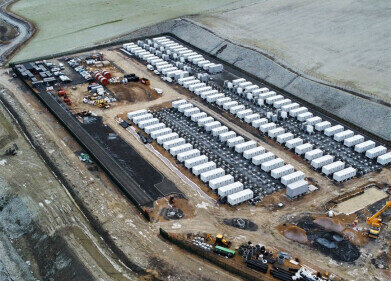Green Energy
Could Nuclear Fusion Solve Our Clean Energy Problems?
Oct 25 2016
Scientists at the Massachusetts Institute of Technology (MIT) have set a new world record for nuclear fusion, marking a milestone on the journey towards achieving a self-sustaining nuclear fusion reactor.
While there remains some way to go before fusion becomes a reality, the latest breakthrough by MIT gives encouragement that the technology might be achievable within the foreseeable future.
Nuclear fusion to thwart climate change?
With the spectre of climate change constantly looming over us and governments, businesses and individuals being encouraged to dispense with fossil fuels more and more vigorously, scientists have constantly been on the lookout for newer, cleaner forms of energy.
Though renewables such as wind, wave and solar power and other technologies like biogas can help to make up some of the energy deficit, nuclear fusion has long been touted as the cure-all solution to our energy woes. If achieved correctly, fusion could provide an endless source of clean energy, virtually ending the need for investigations into other avenues and bringing climate change to a screeching halt.
Of course, we’re still some way off achieving such a scenario. Persistent problems have plagued researchers for years upon years, meaning that functional reactors have always seemed a decade or two out of reach.
A work in progress
Earlier this year, MIT were once again responsible for a fusion breakthrough when they discovered unique interactions between smaller and larger electrons inside the reactor. Now, the very same institute has taken a further step towards making the dream a reality by setting a new world record for pressure in a fusion experiment.
In order to become self-sustaining, nuclear fusion requires plasma to be subjected to incredibly high temperatures and pressures over an extended period of time. Maintaining both these criteria for long enough continues to elude scientists, but the MIT team were at least to reach new pressure levels of two atmospheres at 35 million degrees for two whole seconds – which is a 16% increase on previous records.
“This is a remarkable achievement,” explained Dale Meade, the former deputy chief of Princeton Plasma Physics Lab. “The record plasma pressure validates the high-magnetic-field approach as an attractive path to practical fusion energy.”
Not the only horse in the race
The ground-breaking pressure levels were achieved by an Alcator C-Mod tokamak reactor, which uses very strong magnets to hold the plasma in place. However, such technology is far from the only method of investigating fusion.
Some of the tokamak’s competitors include:
- Tri Alpha Energy, the company backed by Microsoft co-founder Paul Allen and focusing on particle acceleration technology
- General Fusion, the outfit backed by Jeff Bezos of Amazon which mixes lithium and molten lead to hold the plasma in place
- Lockheed Martin, who promised to produce a reactor the size of a HGV by 2024 but have yet to release any details
- First Light Fusion, Helion Energy and the University of Washington’s Dynomak which all investigate the technology in different forms.
Clearly, the race to achieve a self-sustaining nuclear fusion prototype is hotting up… which can only spell good news for the future of our planet. If any of the above organisations is successful in their ventures, air pollution, climate change and energy shortages brought about by fuel combustion could be a thing of the past.
Events
Apr 22 2024 Hannover, Germany
Apr 23 2024 Kuala Lumpur, Malaysia
Apr 24 2024 Sao Paulo, Brasil
May 05 2024 Seville, Spain
May 13 2024 Munich, Germany














